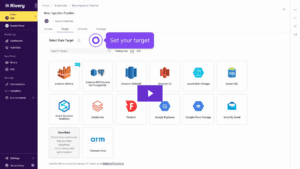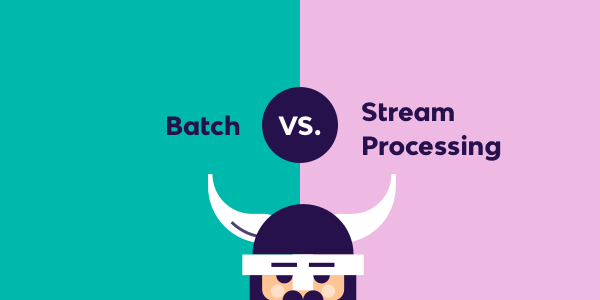Data architecture is the blueprint for achieving your business goals with data. Good data architecture is crucial to many data management systems. It ensures that all data is delivered correctly and to the right user!
Data architecture encompasses creating a reliable framework for data documentation, organization, transformation, and usage. For many companies, data is growing at a faster rate than ever before, and so is its complexity that’s why it’s important to understand what is data architecture. Common use cases at many companies range from ML/AI to marketing analytics, and infrastructure varies widely, from spreadsheets to data warehouses.
In this complicated environment, data architecture is increasingly essential to managing, securing, and activating data throughout an organization. But there’s much more to the topic, and that’s what we will cover in this blog.
Below you will discover what exactly data architecture is, how it’s connected to other data management disciplines, examples of stellar data architecture, and last but not least, how these frameworks can transform your businesses.
Read on for a full overview of data architecture, including why it’s so important for today’s data-saturated companies.
What Is Data Architecture?
Data architecture is a framework that governs how an IT infrastructure upholds an organization’s data strategy, defining how data flows through IT systems and how it is managed.
It serves as a blueprint for ensuring data meets business needs and is used effectively for decision-making.
This framework translates business needs into data assets and manages organizational data flow. By structuring data architecture, organizations can enhance data management, governance, and utilization across various applications. Data architecture also offers a blueprint for the database management systems, data warehouses, data lakes, BI tools, and other technical platforms that actuate a data strategy.
Data architecture delineates the organization’s logical and physical data assets and data management resources. It includes the models, standards, policies, and rules to monitor and control various companies’ acquisition, storage, arrangement, integration, and usage of data.
The framework converts business needs into system requirements to manage data flow through the company.
Data architecture is often described by a set of predefined policies and diagrams. These include:
- Data flow diagrams depicting the data flows through systems and applications
- Data models and data definitions
- Documents to map data usage to the processes of an organization
- Standards and policies for data operations
- High-level architectural blueprints
Data architecture documentation also describes business goals, consumer needs, and core concepts for data management functions.
Data Architecture vs. Data Modeling
Data architecture and data modeling are two unique pieces of one gigantic puzzle – data management. Data modeling focuses on the micro side of data management; it’s a development of a visual representation of data elements’ attributes and their relationships. The data model should match the needs and nature of the organization.
Data architecture is the bigger picture. Data architects create frameworks that keep track of data assets and their flow, dictate their usage, store and integrate them, and so on—all to create a firm ground for data processing.
In this process, data architects use data models to create an appropriate design and choose the proper technology. In the same vein, good data architecture makes the process of creating data models easier.
Data Architecture vs. Information Architecture
Even though they sound like synonyms, data architecture and information architecture are two very different concepts. As mentioned, the first term refers to a discipline that documents data assets and flow, and it’s also a blueprint for data management.
On the other hand, information architecture is a discipline that organizes and labels data so that it becomes meaningful, i.e., so that it becomes information. Now, the difference between data and information is that the first is raw – meaningless units of facts, while information is data with context and meaning.
Without proper information architecture, users won’t be able to access the needed information. However, this type of architecture depends on the quality of data architecture. The reason is that the data architecture framework handles all data organization.
What Are The Different Roles in Data Architecture Design and Development?
Before making data architecture part of your business model, it’s important to learn more about the concept. For instance, learning to distinguish the different roles in data architecture design and development can improve communication within your team and increase efficiency. Below are the 4 most important ones:
- Data Modelers – A data modeler’s primary role is figuring out how to represent the data. This person is also concerned with data accuracy. They create physical, conceptual, and logical models, so they must be proficient in relational and dimensional data modeling.
- Data Scientists – Highly qualified professionals that gather and analyze all data, collecting it from various databases with the help of predictive models and algorithms. Their goals are identifying patterns, hypothesizing, analyzing market trends and customer behavior, and drawing accurate conclusions.
- Data Architects – Think of data architects as visionaries. They design database systems and other data architecture elements. However, they also evaluate data and manage the purchase of required data technologies. Simply put, they need to determine which approach is best to store and analyze the data. They are also responsible for keeping the data safe.
- Data Engineers – If architects are the visionaries, engineers are the builders. They create data pipelines, integrations, and platforms within plenty of databases. Their principal task is to figure out a way to deliver data from multiple sources and ensure it’s ready to be analyzed and processed.
The Technologies Behind Data Architecture
Technologies transform data architectures from documentation to existence, including components as diverse as machine learning, automation, the Internet of Things, and blockchain.
Some of the key technological features of modern data architectures include:
- Cloud-native: Today’s data architectures build and maintain applications in a distributed computing environment hosted in a cloud delivery model. These frameworks are compatible with end-to-end security and high data availability, with the added functionality of cost and performance scalability.
- Scalable data pipelines: The transportation of data from source to destination should be compatible with fast-growing volumes of data. That’s why modern data architectures should support instant data streaming and micro-batch data bursts.
- Seamless data integration: An application’s new module or feature must be integrable without causing any noticeable complications. Usually, modern data architectures integrate with legacy applications using standard API interfaces. Modern data architectures must be capable of sharing data across systems and organizations.
- Decoupled and extensible: The components of the system are not constrained on the same platform, build environment, and operating system. Modern data architectures are loosely coupled to perform minimal tasks regardless of other services.
- Real-time data enablement: Modern data architectures must engage in active data management in compliance with enforced data policies in real-time. These frameworks must build and deploy automated data validation, management, classification, and governance.
Simple Solutions for Complex Data Pipelines
Rivery's SaaS ELT platform provides a unified solution for data pipelines, workflow orchestration, and data operations. Some of Rivery's features and capabilities:- Completely Automated SaaS Platform: Get setup and start connecting data in the Rivery platform in just a few minutes with little to no maintenance required.
- 200+ Native Connectors: Instantly connect to applications, databases, file storage options, and data warehouses with our fully-managed and always up-to-date connectors, including BigQuery, Redshift, Shopify, Snowflake, Amazon S3, Firebolt, Databricks, Salesforce, MySQL, PostgreSQL, and Rest API to name just a few.
- Python Support: Have a data source that requires custom code? With Rivery’s native Python support, you can pull data from any system, no matter how complex the need.
- 1-Click Data Apps: With Rivery Kits, deploy complete, production-level workflow templates in minutes with data models, pipelines, transformations, table schemas, and orchestration logic already defined for you based on best practices.
- Data Development Lifecycle Support: Separate walled-off environments for each stage of your development, from dev and staging to production, making it easier to move fast without breaking things. Get version control, API, & CLI included.
- Solution-Led Support: Consistently rated the best support by G2, receive engineering-led assistance from Rivery to facilitate all your data needs.
How to Develop a Data Architecture
Data management teams need to work in coherence with business executives and consumers to develop a data architecture. It ensures that business strategies, data requirements, and the architecture itself are in sync with each other.
Here are some sample steps for developing a data architecture:
- Meeting with senior executives for their support and requirements.
- Engaging with end-users to understand their data needs.
- Assess the risks and challenges associated with data based on data governance policies.
- Build and track data lineage, data lifecycle, and data flows.
- Evaluate the existing data management technology infrastructure for any discrepancies.
- Develop a roadmap for the data architecture deployment projects.
You can avoid the hassle of building, managing, and monitoring data pipelines by traditional methods with Rivery, which offers 180+ pre-built data connectors and pipeline templates. Rivery helps you develop workflows in minutes, saving precious time for your business and organization.
Popular Data Architecture Frameworks
Here’s an overview of some of the most popular data architecture frameworks in wide use today:
- DAMA-DMBOK (DAMA International’s Data Management Body of Knowledge) is developed explicitly for data management. It explains guiding principles for data management, also providing definitions for data management functions, deliverables, and roles.
- Zachman Framework for Enterprise Architecture is an enterprise structural framework for organizing information created by John Zachman at IBM during the 1980s. The data column includes several layers. Additionally, it comprises architectural standards, an enterprise data model, a semantic model, a physical data model, and actual databases.
- The Open Group Architecture Framework (TOGAF) is an enterprise architecture ontology that offers a high-level framework to develop enterprise software packages and applications. It follows a systematic approach to organizing the development process. This approach focuses on curtailing errors, managing timelines, ensuring cost-effectiveness, and aligning Information Technology with business units to produce desirable results.
Strong Data Architectures Make Strong Companies
As the volume and complexity of data continue to grow, strong companies need strong data architectures to thrive.
Modern data architectures allow companies to translate vast quantities of disparate data into manageable assets that can be leveraged to achieve business objectives.
That’s why, for a data-driven company, a modern data architecture is no longer just a competitive edge. A modern data architecture is the backbone of a data-first company.
Can't miss insights
Minimize the firefighting. Maximize ROI on pipelines.





